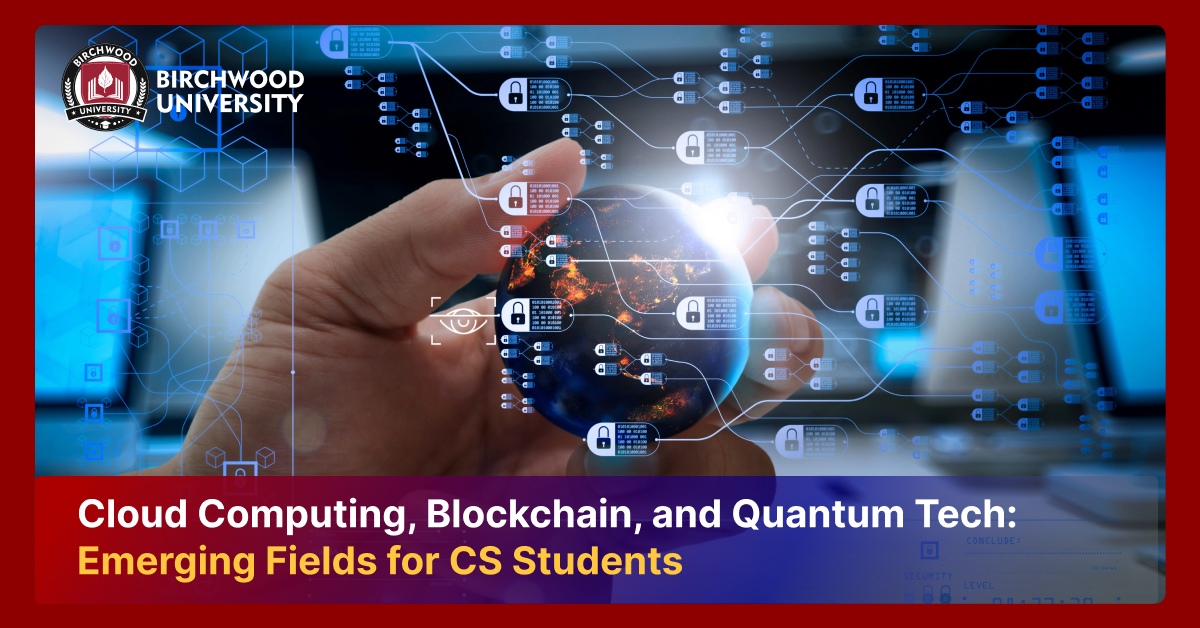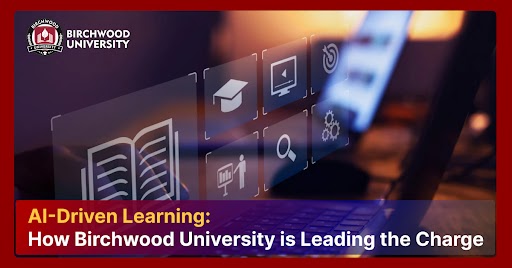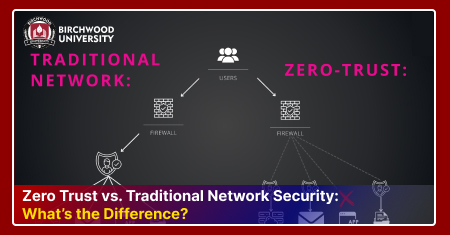Metaverse in Education: Hype or the Next Big Leap in Learning?
Jul 4, 2025Imagine a classroom setup where you walk into Ancient Egypt, not just by reading books, where you experience walking with pharaohs, the feel of sand beneath your feet (even if it's virtual), and having a discussion with holographic Cleopatra. Now think of a biology class where you shrink to the size of a cell, and make your way through a pulsing highway of a virtual bloodstream. It is the metaverse, a virtual landscape in which education is said to undergo a sea change by melding immersive technology and human inquisitiveness. It was born inside the universe of sci-fi and games, and the metaverse is now approaching the gates of schools and universities and talking about the future, where there are no walls in the domain of learning. Yet is it this digital utopia that will mark the next giant step in education, or only a glittering mirage driven by the ambitions of tech giants? This study blog probes the potential of the metaverse to enhance the learning processes, its practical use, and obstacles that might jeopardize its high expectations.
What is the Metaverse in Education?
The metaverse in education can be defined as a virtual environment, augmented, or mixed-reality space utilised to engage students and educators in activities in the context of cooperation in real-time and is likely to use avatars. Such spaces are designed using technologies such as virtual reality (VR), augmented reality (AR), artificial intelligence (AI), and blockchain to provide engaging active spaces. The goal of the metaverse is to reproduce or expand upon the social and experiential elements of physical classrooms, allow simulations and gamification of learning, and allow collaboration on a global scale, unlike normal e-learning platforms.
An example is when Medical students train in surgeries on a risk-free virtual operating room. The promise is the dynamic, interest-provoking learning process that is not limited by geography or distance.
The Metaverse in Education: The Possibility
1. Virtual Reality Experiences
With the metaverse, this experience of immersion is unrivalled, and learners find themselves communicating with content in a way that is impossible with conventional methods. Stanford University's (2021) study concluded that VR-based learning could enhance the retention rates up to 75 per cent higher than in the case with traditional lectures, as students were allowed to engage with 3D models and simulators. As an example, the Engage and VRChat platforms allow educators to establish a virtual classroom to dissect virtual frogs, encounter ecosystems, or conduct pseudo-physics, all of which allow abstract ideas to become accessible.
2. Accessibility and Inclusiveness
Worldwide Metaverse has the potential to make education more democratic with the help of uniting students of different backgrounds. A student in a provincial village may be present at an online lecture held in one of the most prestigious institutes or may even cooperate with classmates across the globe. Programs such as the Horizon Workrooms by Meta and the Mesh by Microsoft are looking to streamline this process. The metaverse would also be able to support varied learning requirements since disabled students or learners with special needs may interact through modified avatars or tools, making it more inclusive.
3. Gamification and Engagement
One of the most effective tricks to enhance engagement, gamification, is organically suitable in the metaverse. Using platforms like ClassVR, game-like features, i.e., quests or rewards, can be used to encourage students. According to a study conducted at the University of Maryland in 2022, gamified or VR learning environments raised student motivation by 60 per cent and enhanced problem-solving skills. The experience of the metaverse of integrating education with interactive storytelling might make education more engaging, offering especially younger students to want to learn.
4. Individual and Dynamic Learning
Metaverse platforms powered by AI can personalise the content to meet individual learning styles. As an example, Immerse applies AI to adapt language classes to the proficiency, pace, and preferences of a student. Such flexibility may help overcome the shortcomings of one-size-fits-all educational systems, making students feel supported. Credential tracking also allows the generation of digital repositories and provable digital records of feats through blockchain technology.
5. Future Skill Development
Students who train in the metaverse will be equipped with the skills necessary to work in a digital-first world, including virtual collaboration, digital literacy, and creative problem-solving. VR is being used by companies such as Accenture to train their employees already, implying that skills acquired in the metaverse will be sought after. If educational institutions utilise these tools, they could prepare students to work in fields where more and more tasks are being done virtually.
Current applications in Education:
A number of organisations and websites have already been trying out the metaverse:
Stanford University Virtual Human Interaction Lab: Employs VR to train on cultural awareness and empathy by putting students in various social situations.
VictoryXR: Collaborates with schools to assist in the provision of VR curricula, such as virtual science laboratories and history tours.
Oculus Education Pilot by Meta: Delivers VR headsets to schools, allowing interactive learning in such disciplines as biology and art.
Decentraland: a blockchain-based platform with virtual universities that students visit to attend lectures and obtain digital credentials.
These are practical snippets, and scaling them presents a problem given the cost and infrastructure, as well as training needs.
Challenges and Limitations:
Although it has a bright future, the metaverse in education has some serious obstacles that may dampen enthusiasm.
1. Price and Ease of Application:
The best VR headsets (i.e., Oculus Quest, HTC Vive) are priced between $ 300-1,000, without the requirement of expensive computers or fast internet. In a 2023 report, UNESCO pointed out that 43% of students all over the world do not have access to high-speed internet, rendering mass adoption challenging, particularly in developing areas. Institutions with small budgets might not be able to put money into hardware, software, and maintenance.
2. Technical Barriers:
Building and sustaining the metaverse requires technical skills. Most educators are not trained on how to set up or operate a virtual classroom, and the failure of the VR platforms may halt learning. According to a 2024 survey of EdTech Magazine, 68% of educators considered themselves ill-equipped to establish VR within their curricula because of technical complexity.
3. Medical and Mental Issues:
Sustained use of VR may result in motion sickness, eye strain or disorientation, especially among younger users. A 2022 study published in Frontiers in Virtual Reality observed that 20-30 per cent of VR users are distressed after 30 minutes. Moreover, when someone is too involved in virtual worlds, there is a fear of loneliness and addiction or lack of a connection to real life, particularly in children.
4. Fairness and Ethical Concerns:
The metaverse may increase inequalities by limiting access only to more affluent institutions or geographies. There is also a matter of privacy, given that some platforms are gathering biometrics (e.g., eye tracking) or behaviour patterns, which may result in misuse. Although blockchain-based credentials are secure, they can leave out students who have not come across digital wallets or decentralised systems.
5. Pedagogical Effectiveness
The opponents claim that the educational potential of the metaverse might be overshadowed by its novelty. A 2023 meta-analysis on Educational Technology Research and Development resulted in mixed findings on the effects of VR on learning, with increasingly no significant improvements over conventional means. The metaverse may turn into a glitzy sideshow without sturdy pedagogical structures.
Hype vs. Reality: Is the Metaverse the Next Big Leap?
The potential of the metaverse in education is irrefutable; it has to be realised with key questions answered.
Scalability: Is it possible to scale the metaverse out of experimental programs into a mainstream tool? Our existing experiments are hopeful and confined to well-financed establishments.
Cost-Benefit Balance: Will the high costs of immersive learning be worth the results? In low-budget schools, 2D e-learning platforms might still be more feasible due to their lower costs.
Long-term Effect: Will the metaverse be associated with quantifiable benefits in terms of improved learning outcomes, or will it prove a case of finding a problem to solve?
The skeptics say the metaverse is a hoax, and its hype is prone to the commercial interest of tech companies. The online investments of billion-dollar figures such as Meta and Microsoft in metaverse technologies have established a sense of inevitability. However, previous technology fads such as MOOCs (Massive Open Online Courses) and Google Glass also harboured a revolution, whereas they did not meet the hype. This is similar to what may happen to the metaverse when it does not provide practical results.
On the other hand, those in support envisage it as the logical next stage of learning digitally. It is estimated that the worldwide edtech sector will amount to $605 billion by 2027, and VR and AR will be there to contribute. Should the costs fall and the infrastructure go mainstream, then the metaverse might become the next important tool in education, like laptops or smartboards.
Future of the Metaverse in Education:
As we envision 2030 and the future, the metaverse has the potential to revolutionise education by overcoming the existing barriers. Immersive learning will become available to more people due to the improvements in hardware: possibly, the immersion will reach anyone through lightweight AR glasses or inexpensive standalone VR devices.
By 2027, it is estimated that entry-level VR headsets will be available for under 100 dollars in developing nations with schools capable of employing the devices. Metaverse systems developed through 5G and the next-generation 6G networks would dispense with the costly local infrastructures and enable students to enter virtual classrooms with inexpensive devices such as smartphones.
AI will be central to this process, empowering hyper-personalization in learning pathways that realize dynamic, real-time adjustments to the prioritizing of needs, interests, and competencies of the students. Think about how an AI classroom in the metaverse could work: students could create a custom avatar and have access to AI tutors, follow along a guided simulation, with difficulty changing depending on the student. With blockchain and decentralized technologies, secure, verifiable credentials will be implemented, forming a worldwide standard based on knowledge of digital diplomas being accepted by employers and institutions.
Metaverse may also transform the philosophy of lifelong learning. Continuous education programs can run across virtual campuses in platforms like Decentraland or Spatial, where professionals can learn to upskill through virtual spaces that mimic the same issues they would face in the real world. An example would be having engineers learning how to create sustainable infrastructure using a virtual city, and teachers learning how to manage a classroom using simulated environments.
Nevertheless, the question of equity and ethical issues is the key to the future. It is essential that governments and organizations consider universal access to avoid a digital divide so low-income communities take the advantage of metaverse education. Significant policies will be required to protect the information of students and prevent such risks as addiction or excessive use of virtual context. The co-operation between edtech companies, educators and policymakers will play an essential role in designing scalable and inclusive structures.
It may also happen that by 2035, the metaverse might perfectly fit into hybrid learning paradigm where there are a combination of physical and virtual learning classrooms. Students may come to school face-to-face to socialize, but they enter the metaverse to take specialist courses or international teamwork. In case these trends occur, the metaverse will not only improve education, but it will change it, building a fluid, transnational educational environment that gives people everywhere the power to learn.






